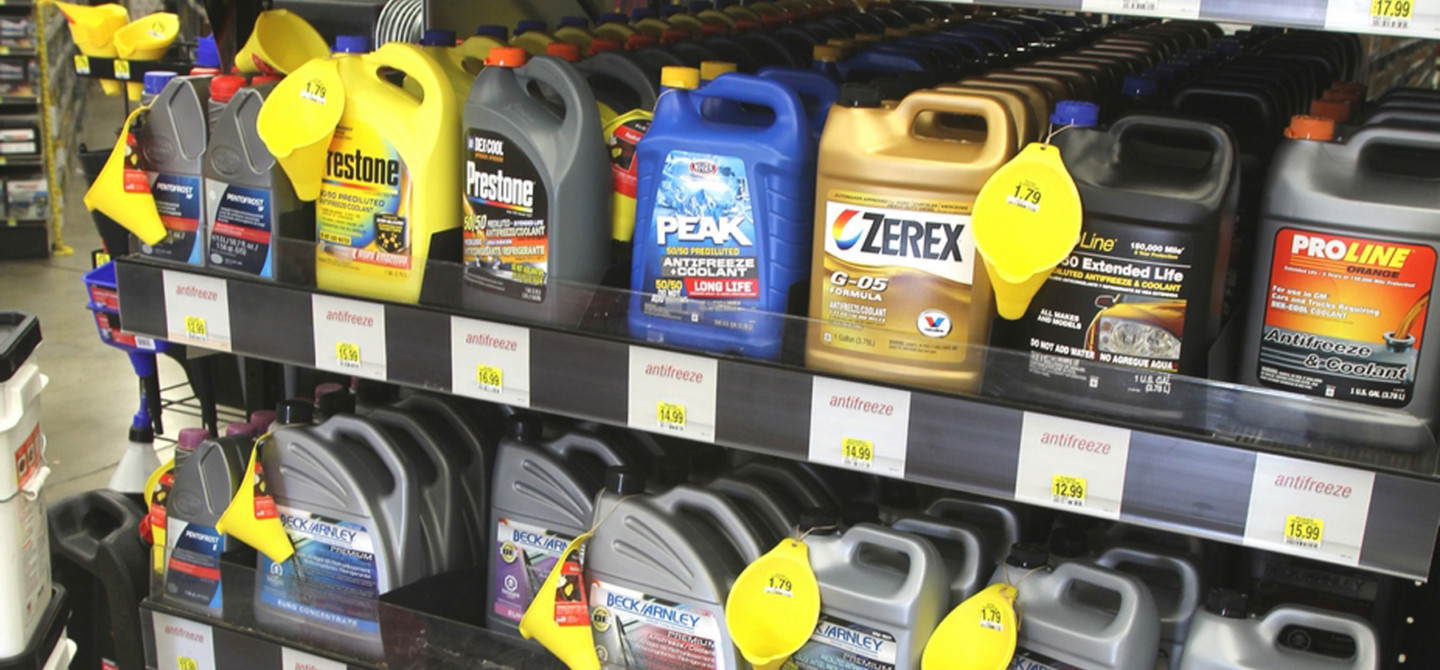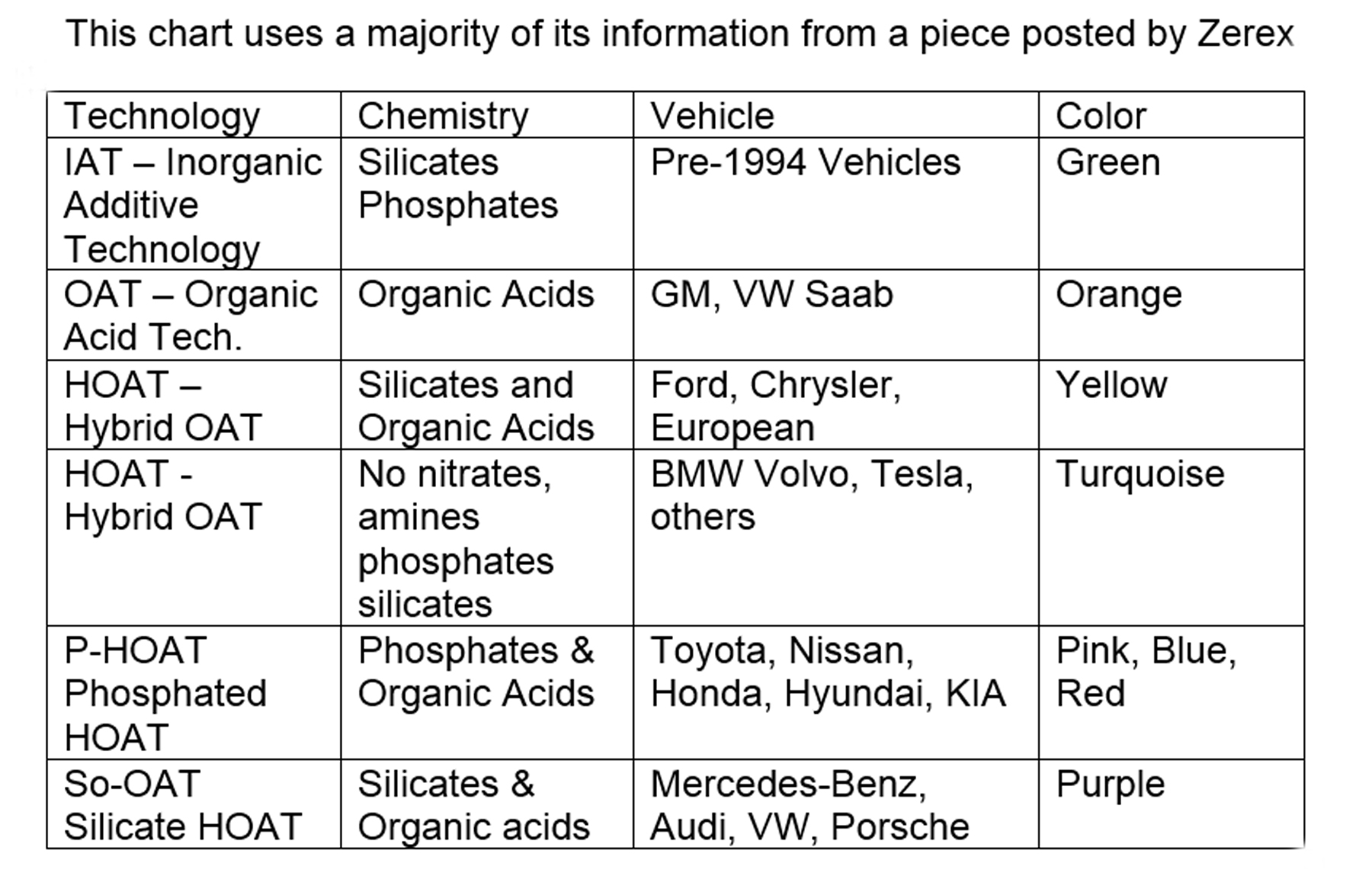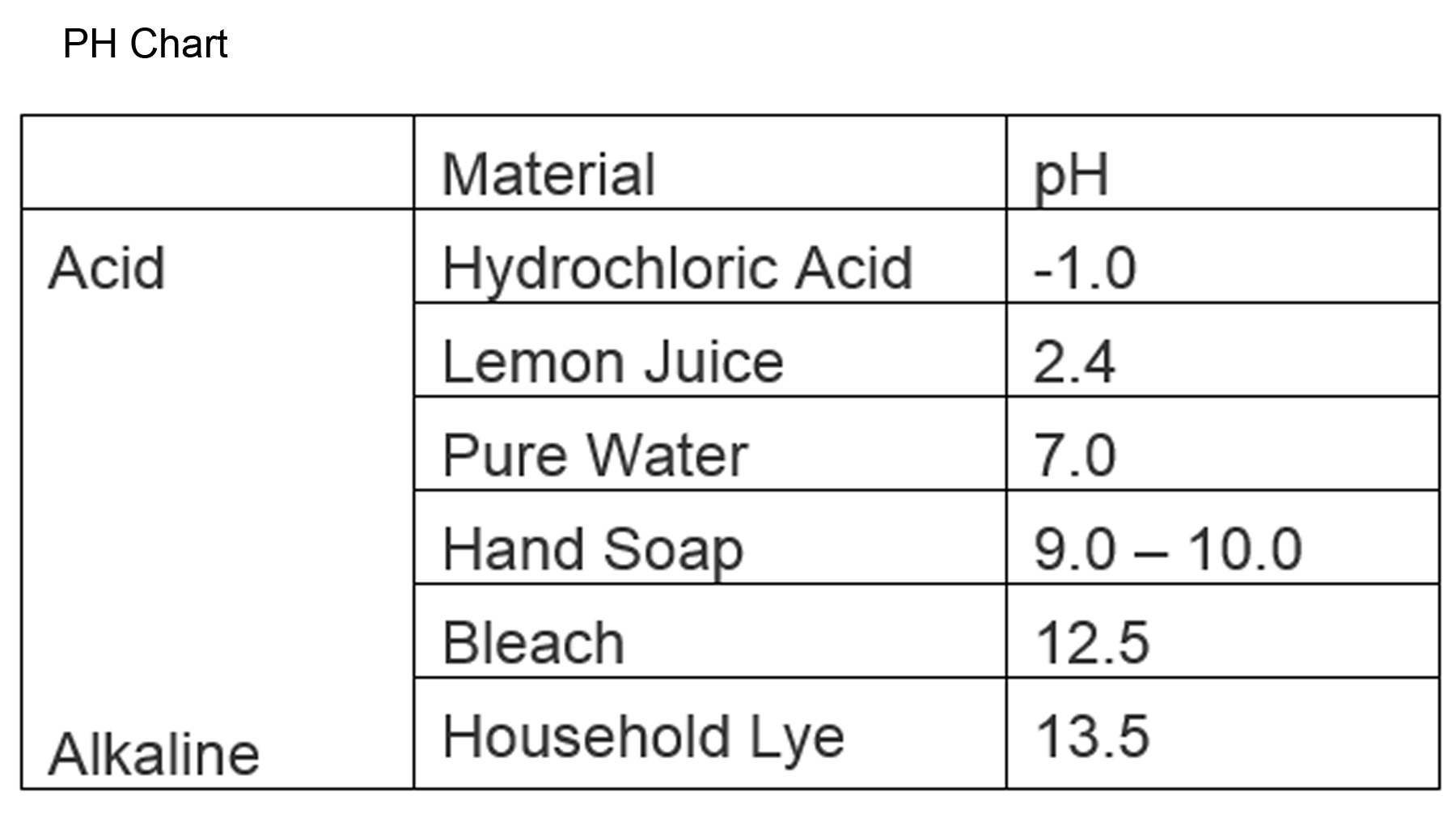Forget nearly everything you know about antifreeze. The coolant landscape has radically changed, and new chemistry formulations are being introduced at a rapid rate. Some appear to be very good, while others – especially for the older, muscle car crowd – should be avoided. Not all that long ago, if you walked into an auto parts store, the only decision about antifreeze was the brand name. Walk into your local store today, and you’ll find a dizzying array of chemistry choices.
The new chemistry formulations began in earnest after 1995. The first warning is to never mix different formulations. But, knowing some facts about these mixtures will help with understanding the party that’s going on inside your cooling system.
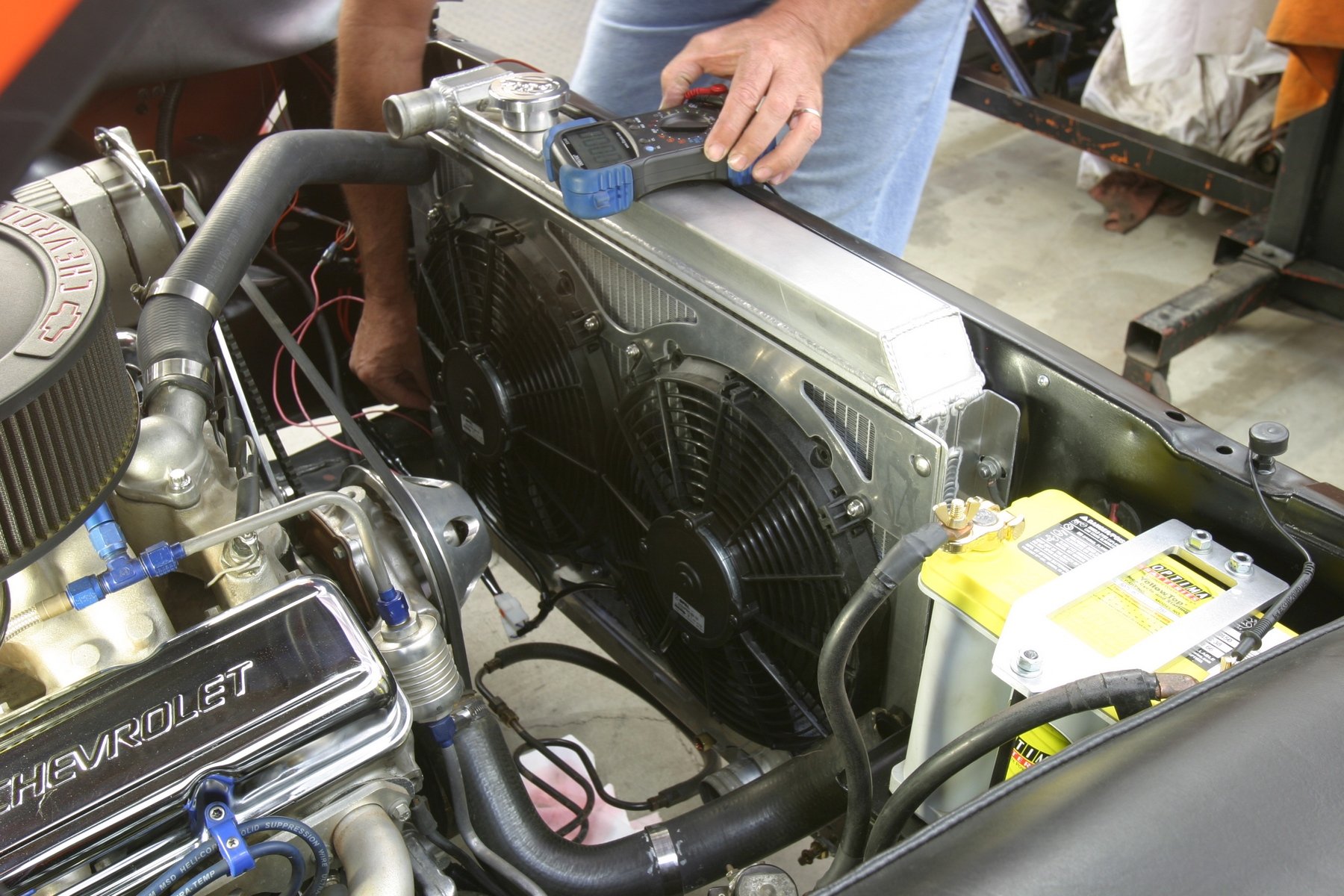
Aluminum radiators use very thin tubes to efficiently transfer heat to the moving air, but are very susceptible to even minor corrosion that will eventually cause leaks. The focus of this story is emphasizing the anti-corrosion capabilities of different coolants and additives.
Another upfront note is many manufacturers claim to have universal coolants. There is significant disagreement within the industry as to the legitimacy of those claims. Once you’ve digested this story, at least you will have an understanding of the mix of additives that make up the solution streaming through your radiator.
The safe approach for cars built after 1995, is to use the original coolant intended for your vehicle. In the case of a 2010 Camaro, Dex-Cool is still the coolant to use. The same is true for all remaining cars. What you’ll discover, is there are five different chemistry formulations, so you need to be careful in your selection.
This escalation in specific coolants is because each manufacturer is attempting to extend the life of the coolant, while also blueprinting the coolant to improve anti-corrosion capabilities for specific engines. All aluminum engines will benefit from a different type of anti-corrosion chemistry compared to engines that are either all cast-iron or a mix of cast-iron and aluminum.
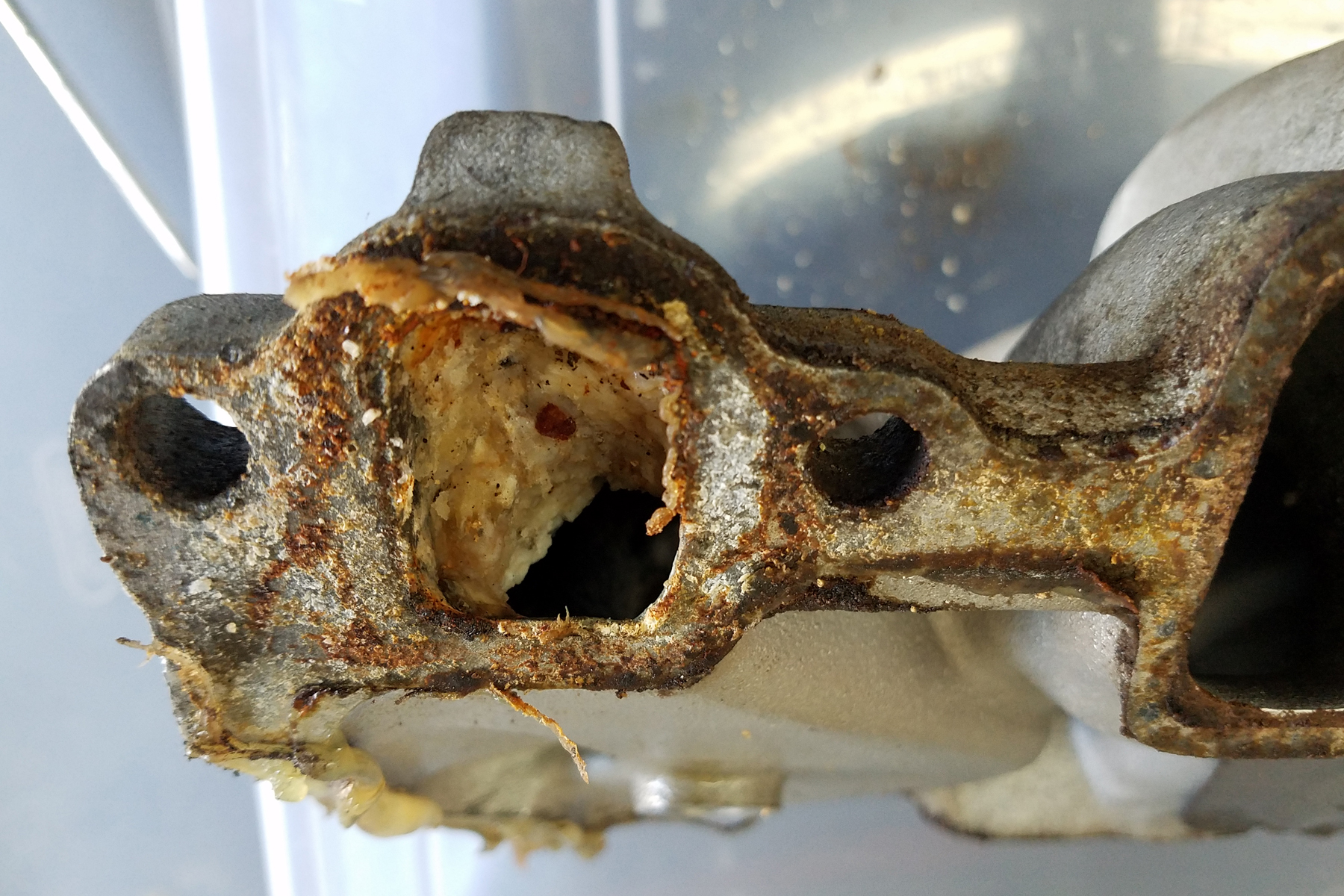
When a friend rescued a ’71 Z28 Camaro that had been sitting for almost 20 years, this is what we discovered inside the intake manifold. We queried Jay Ross about this corrosion: “This is called antifreeze gel. It consists largely of hard-water contamination, silicate dropout from antifreeze, as well as a little bit of iron corrosion and probably some aluminum corrosion byproducts. You’re lucky. When those gels “cook” onto hot surfaces, only a strong acid will clean them out.”
A Marked Difference
Most coolant articles reference coolant colors as a “dye marker” to delineate different materials. Unfortunately, according to Jay Ross, a chemist at Applied Chemical Specialties, a manufacturer of several high-quality anti-corrosion additives, there is no consistency to antifreeze color. Ross is a member of the American Society of Testing and Materials (ASTM) and says there is no industry standard for coolant colors. So, while color can be employed as a shortcut – it is no guarantee of chemistry make up.
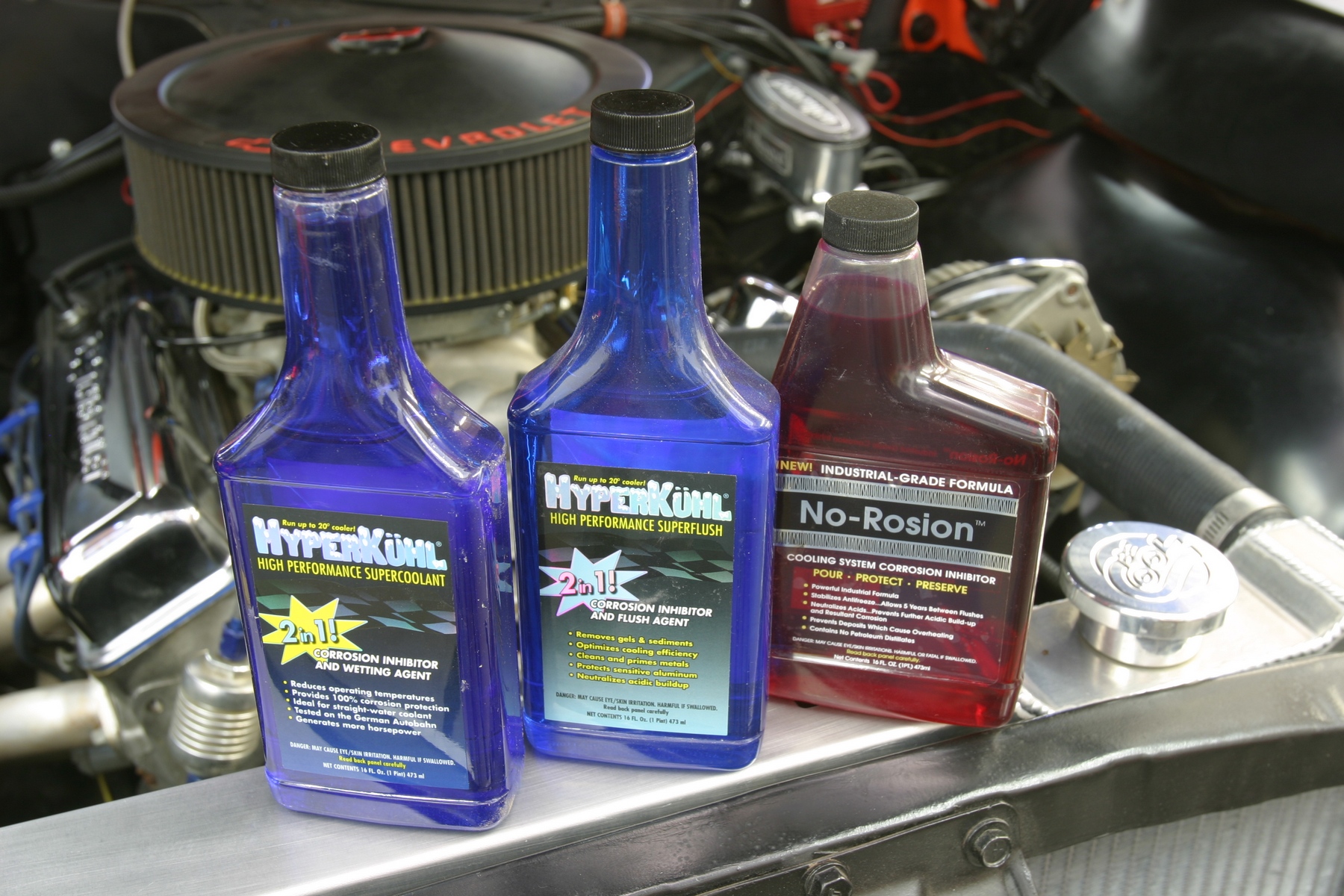
Nothing beats straight water for transferring heat. But water is a lousy corrosion inhibitor. The best choice for cooler operating temperatures is water with an anti-corrosion additive. We’ve used the No-Rosion (brass-copper radiators) and the newer HyperKuhl (for aluminum radiators) with great success. Other products that work well are Royal Purple’s Purple Ice, Driven’s Coolant System Protector (CSP), and others.
Our focus is on anti-corrosion additives that make up roughly 3-percent of the total mix in a 50/50-mix of coolant and water. Green Ethylene Glycol relies on silicates that quickly form a protective layer on all metal surfaces in a cooling system, and protect against corrosion. Silicates are granular, somewhat abrasive, and can cause scaling. These are often combined with what are called phosphates – a chemical naturally present in the human body, food, and is even used as part of the polishing agent in toothpaste. This style of coolant is called Inorganic Acid Technology – IAT.
The goal for new-car manufacturers is to extend maintenance schedules – including coolant. They also recognized that tap water in many locations can be harsh. Hard water contaminants easily combine with silicates and phosphates to cause scaling, which plugs radiator coolant tubes. To combat this, European car companies specify a coolant using a Carboxylate, an anti-corrosion additive that employs a chemical reaction to prevent corrosion instead of a protective layer on the surface of the cooling system.
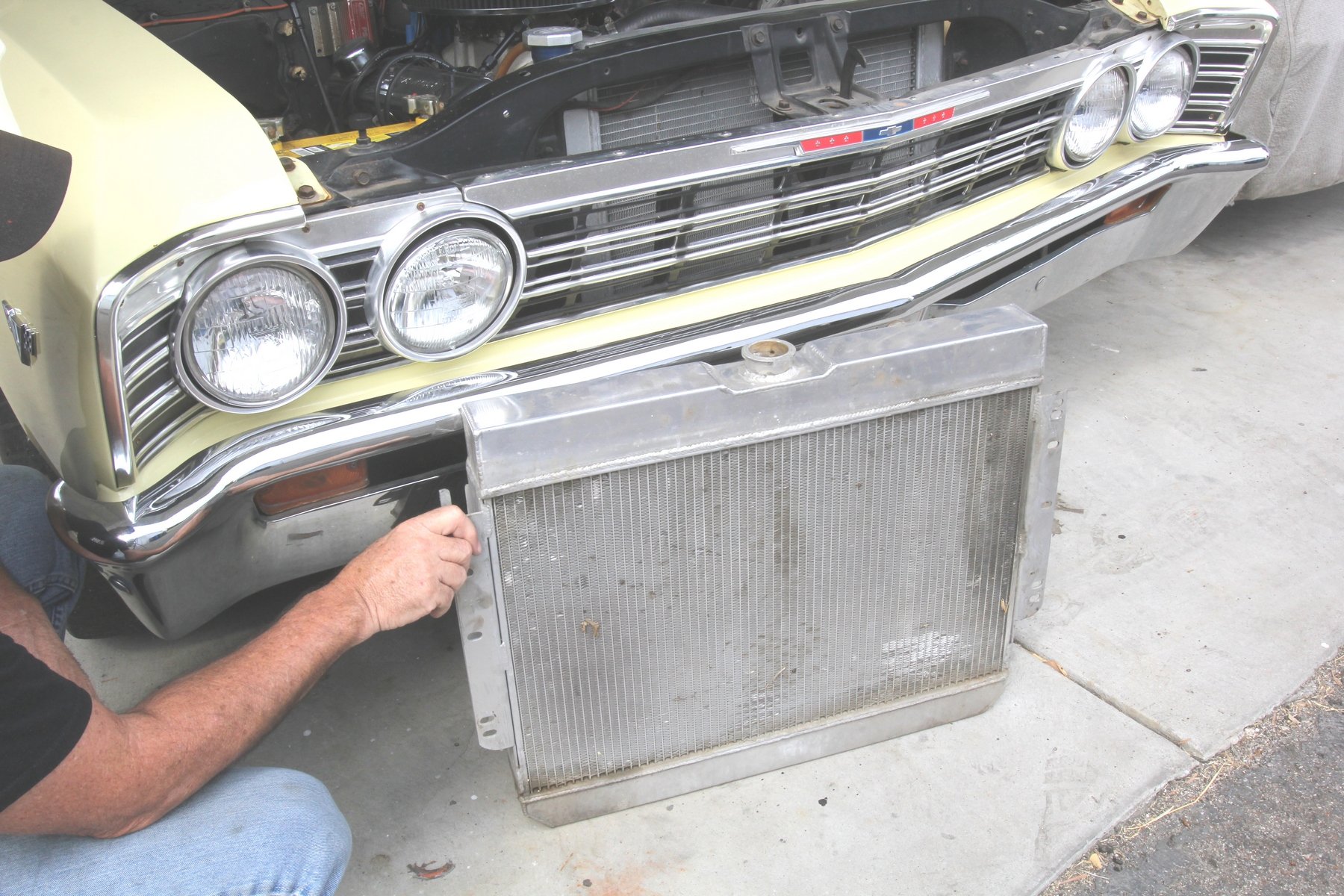
Make sure your mix ratio is very close to 50/50. While this improves freeze protection, the real reason is to provide an adequate corrosion protection level. Manufacturers calculate this protection based on a 50/50 ratio. Only using a 20/80 ratio of antifreeze combined with heavily mineralized tap water does little to minimize corrosion.
Antifreeze get High-Tech
The original Ethylene Glycol that we’re all familiar with – the green stuff – is a petroleum-based IAT. This coolant uses silicates and phosphates as the important anti-corrosion additives. The advantage to silicates, is they plate themselves to the wall of the engine and radiator, immediately providing corrosion protection. The biggest detractor when using IAT coolant is that this silicate/phosphate additive package degrades quickly if compared to later technologies – requiring either a replenishment additive or a flush and refill – perhaps as often as once every year.
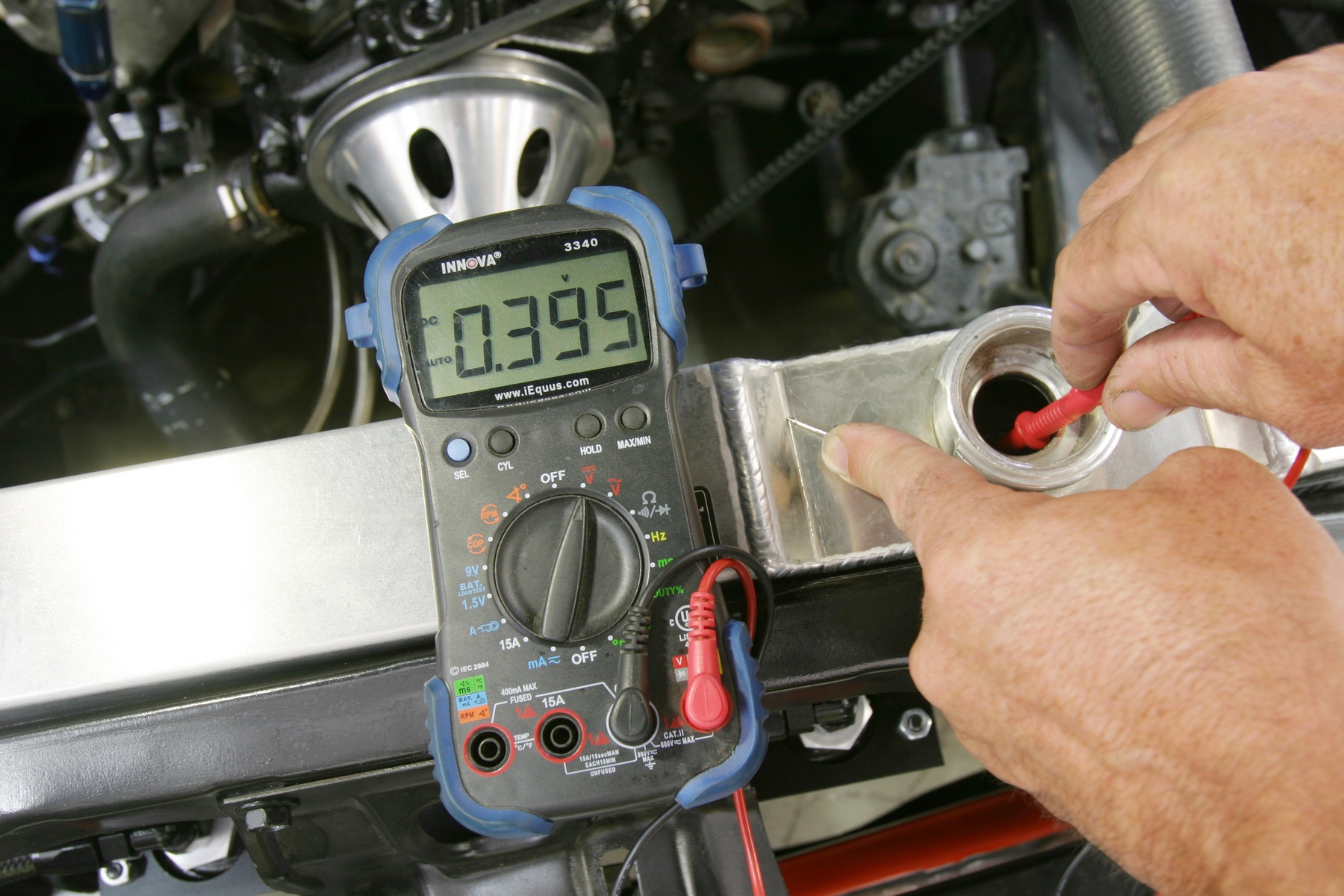
One way to test coolant condition is to measure its voltage. Most volt-amp-testers (VAT) will read in millivolts (1,000 millivolts equals 1 volt). Place the positive lead in the coolant without touching the radiator, while grounding the negative probe to the radiator. Readings below 0.300 are considered acceptable. Numbers exceeding 0.500 will accelerate electrolysis corrosion. Note this radiator is testing at 395 millivolts. If the reading is high, flush and refill the system with quality coolant or anti-corrosion additive, and check for possible poor electrical grounds or potential stray electrical current that could find its way into the cooling system.
In the late-1990’s, GM created the now-familiar orange Dex-Cool. There were some problems with this coolant that created mistrust within the car community. Despite this bad rap, Dex-Cool is a quality Organic Acid Technology (OAT) antifreeze that works well in its intended application. It is designed to work best in a closed cooling system, although claims that it reacts badly when exposed to air do not appear to be true.
The worst happens when an OAT is mixed with inorganic IAT (green) Ethylene Glycol. This causes all kinds of gelling problems, which is why mixing coolants is to be avoided. The chemistry of OAT coolant eliminates the abrasive silicates and phosphates. The factory recommendation for changing Dex-Cool is 5 years or 50,000 miles, which may be longer than what would be considered prudent. But this is far better than its IAT predecessor. One downside to this extended-life protection is that OATs can require up to 5,000 miles to achieve maximum corrosion protection.
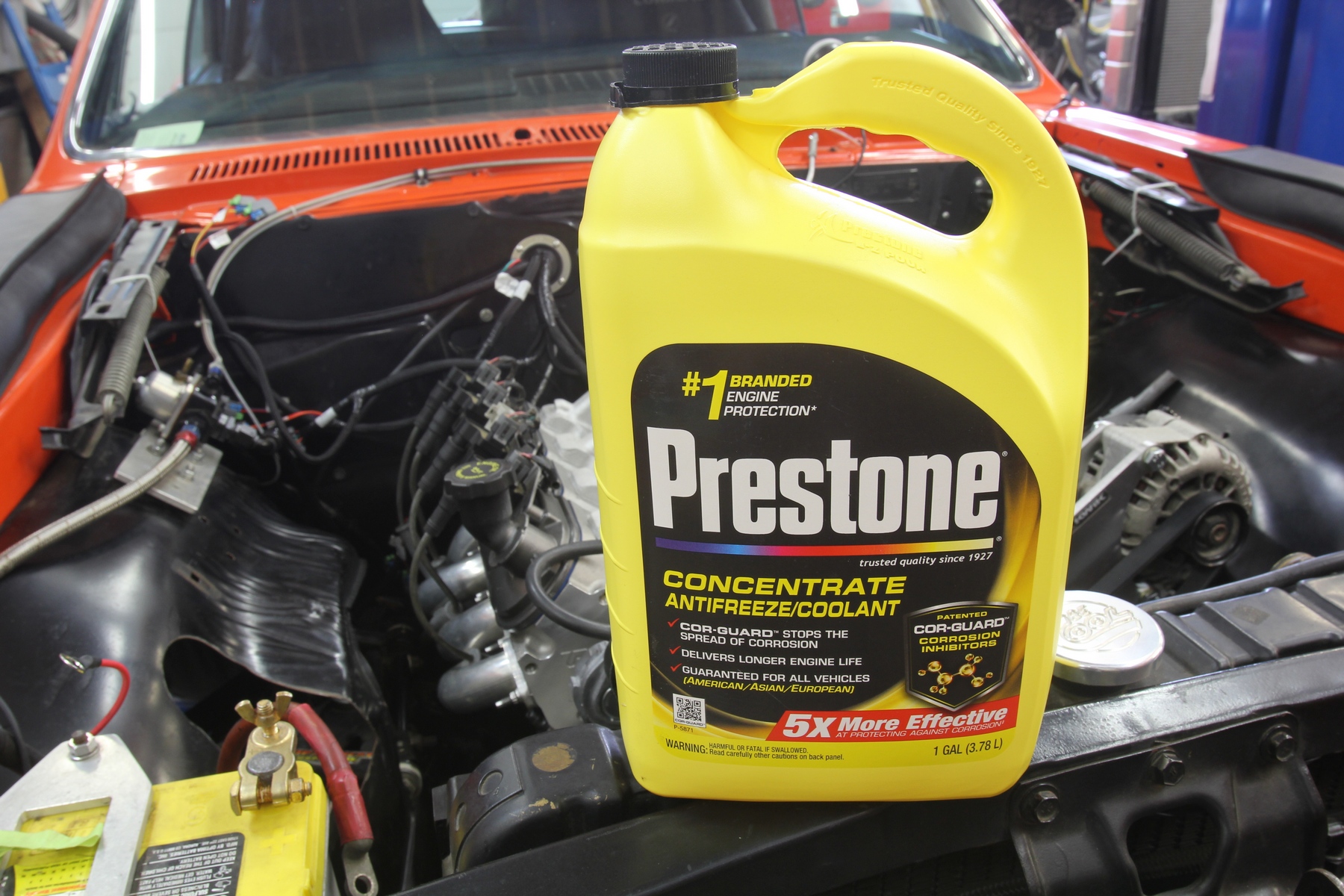
Its best to avoid universal coolants, mainly because this may create chemistry conflicts. We had to search this Prestone bottle to discover a fine print reference to this as an IAT coolant. It would be okay to use in a pre-1996 vehicle, but it would appear questionable for any GM car using OAT Dex-Cool. A better choice for a later vehicle would be a Prestone OAT coolant intended for specifically Dex-Cool vehicles.
Asian car manufacturers also eliminated silicates for their specific coolants, using instead, a mix of Carboxylates to form a hybrid OAT or HOAT. With a cursory investigation, it appears this coolant might be compatible for use in older muscle cars that were only filled with the standard IAT green coolant. An example of HOAT coolant is Toyota’s red antifreeze that is IAT compatible since both contain phosphates. The addition of phosphates also means that sometimes it can be termed a POAT for Phosphate Organic Acid Technology.
Phosphates, however, have their own inherent issues, and there is no research to support that this coolant could be used in older applications. At the same time, it would appear that with a new engine and cooling system containing aluminum components, this coolant could offer significant advantages in corrosion control. But with no research to back this up, no hard fact recommendations can be made. All of the above coolants fall within the Ethylene Glycol family.
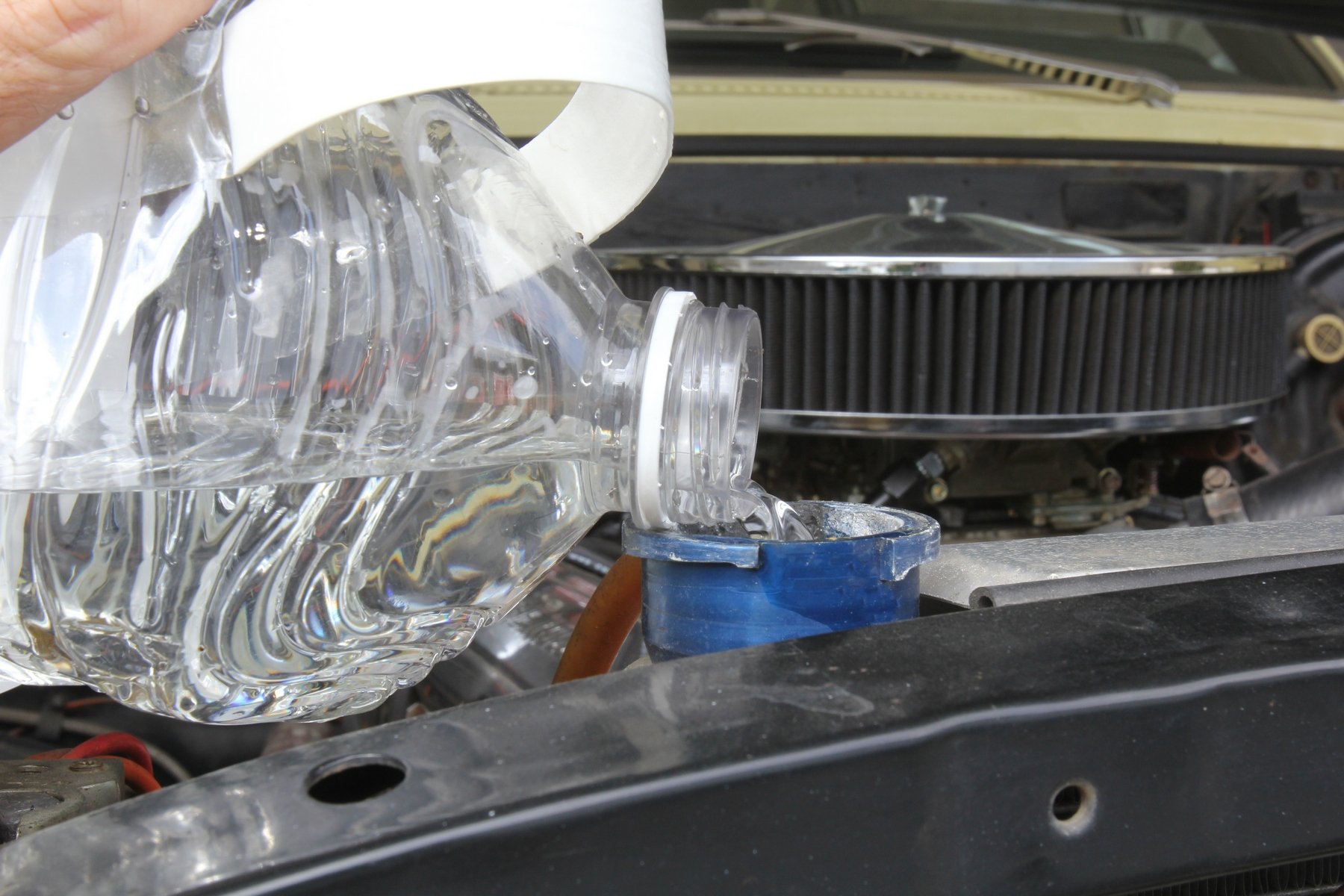
The water chosen to mix with coolant is just as important. Ross tested a sample of Los Angeles tap water and reported it was heavy with hard-water deposits. Ross also warns not to use deionized or distilled water. They are stripped of electrons, but if that is your only choice, deionized is better than tap water. The best choice is either soft water or reverse-osmosis-filtered drinking water.
New Kid In The Game
A different coolant that is garnering attention is an offshoot, called Propylene Glycol. It is often touted as a “safe” alternative coolant since it is not poisonous when ingested. The main selling point for Propylene Glycol is in its full-strength formula. It has a boiling point of 370 degrees Fahrenheit. The most well-known brand of Propylene Glycol is the Evans Coolant. Prestone also offers a 50/50-mix product with a much lower boiling point.
Propylene Glycol is most often found in food processing plants, used as an industrial antifreeze because it is safe to be used around food. It is also used in model train engines to simulate steam and as an additive in e-cigarettes to produce that ridiculous vapor signature. However, as a coolant, it is less efficient for transferring heat as compared to Ethylene Glycol. The difference is minor, but if lowering engine temperature is the goal, then Propylene Glycol will make that job more difficult.
This leads us back to the original reason for using a liquid engine coolant – to transfer heat away from internal heat sources such as combustion chambers and cylinder walls. Water is by far the most efficient heat transfer medium – period. However, water is terrible when it comes to preventing corrosion. In the early days of the automobile, alcohol was used as an antifreeze, but it actually accelerated corrosion. This created the perfect introduction for Ethylene Glycol in the 1920s. Unfortunately, Ethylene Glycol raises the viscosity of coolant as compared to straight water. It is also less efficient than straight water in terms of transferring heat from the combustion chamber to the coolant.
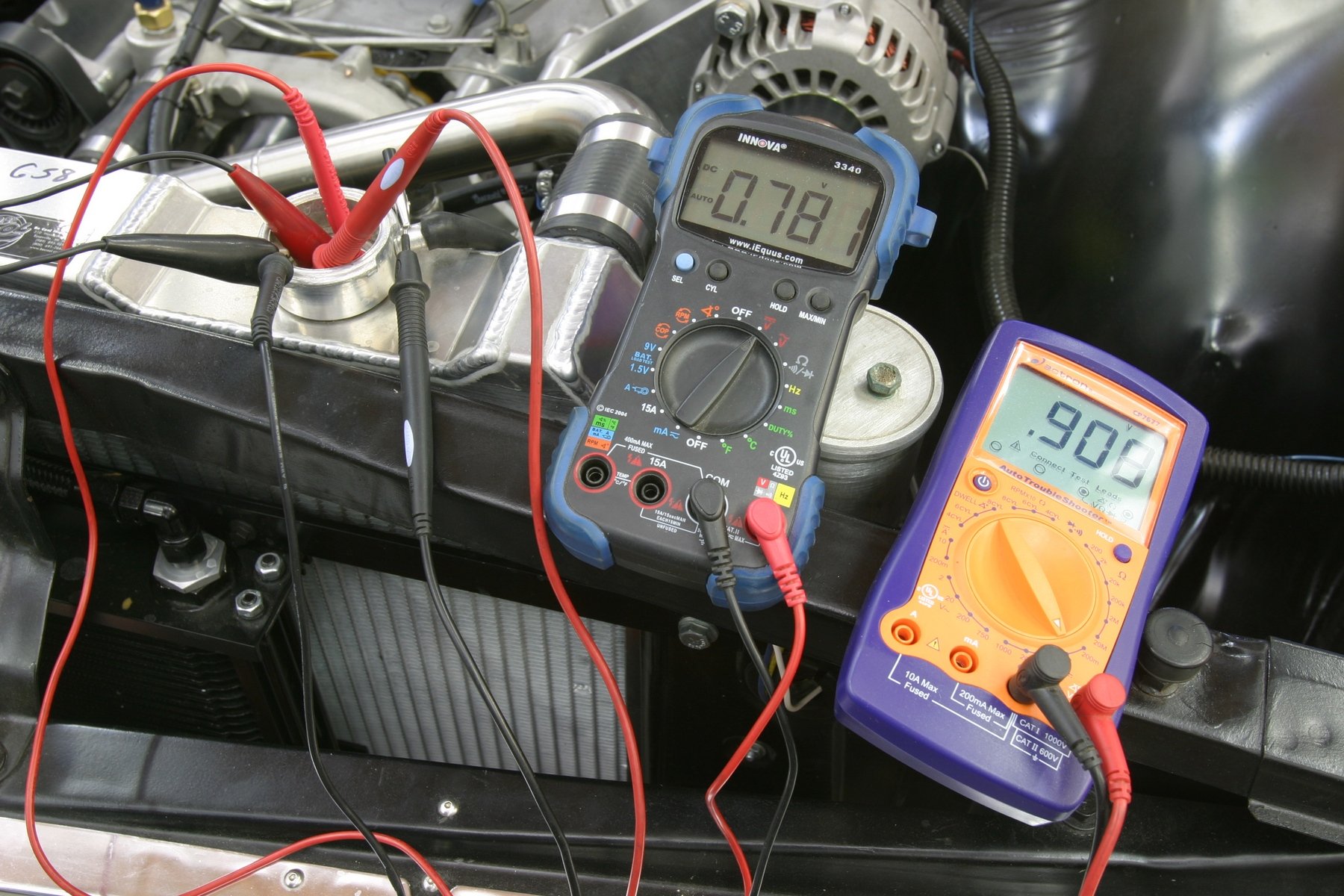
Damage from electrolysis is a complex subject. This new aluminum radiator began leaking from the core tubes in less than 30 days. The cause was traced to excessive cooling system voltage not caused by the electrical system. Chemist Jay Ross calls this intergranular corrosion (IGC) and is caused when different and incompatible metal alloys interact when submerged in a common coolant solution. IGC causes rapid corrosion of the thin aluminum tubes. We suffered this problem with an LS engine with stock aluminum heads and an aluminum radiator. As you can see, our two VAT readings vary between 0.781 and 0.908 millivolts. Coolant temperature was 180 degrees with the engine off and the battery removed from the vehicle. The final solution was to replace the radiator with a copper-brass unit. A radiator with different alloy aluminum might also have worked.
The standard for measuring heat transfer is called Specific Heat Capacity, and there is nothing better than water, which is rated at 1.00 calorie/gram per degree Centigrade. That converts to 4.18 joules of energy per gram per degree Centigrade. A 50/50 mix of IAT antifreeze alters this thermal efficiency, but at typical operating temperatures of around 180 degrees Fahrenheit, the heat transfer number falls to 3.48, which is a nearly 17-percent drop in efficiency. This means that a 50/50 mix of Ethylene Glycol removes less heat from the combustion chamber and cylinder walls when compared to straight water.
For summertime performance driving and racing, nothing beats straight water for a coolant, but obviously, this still requires some method to prevent corrosion. There are many anti-corrosion additives on the market, but we’ve run across several additives that work very well. We’ve been using Applied Chemical Specialties’ No-Rosion for many years with excellent results. Recently, Ross has created a second additive dubbed HyperKuhl, that is especially good at preventing corrosion in aluminum radiators. It also uses a surfactant that improves the thermal transfer of heat by reducing nucleate boiling on the back side of combustion chambers.
Both of these additives can be used to prevent corrosion, but they do not help in terms of keeping the coolant from freezing. The ideal heat management procedure would be to run quality water with a No-Rosion or HyperKuhl additive in the warmer months and then drain half of that and mix with a quality IAT antifreeze for winter driving or storage.
Not All Water Is Equal
As mentioned earlier, water quality varies wildly. The big determining factor is mineral content. Tap water is often termed hard water because it contains calcium, magnesium, and other mineral deposits in various concentrations. Hard water should not be used in cooling systems. You may have read recommendations for using only distilled or demineralized water in a cooling system. According to Ross, this is not the ideal water to use. The distillation process strips electrons from water, creating an electron-hungry solution. When added to a cooling system, the water immediately attempts to balance this electron deficiency by pulling free electrons from vulnerable soft materials like magnesium and aluminum in the cooling system. This is the classic chemical description of corrosion.
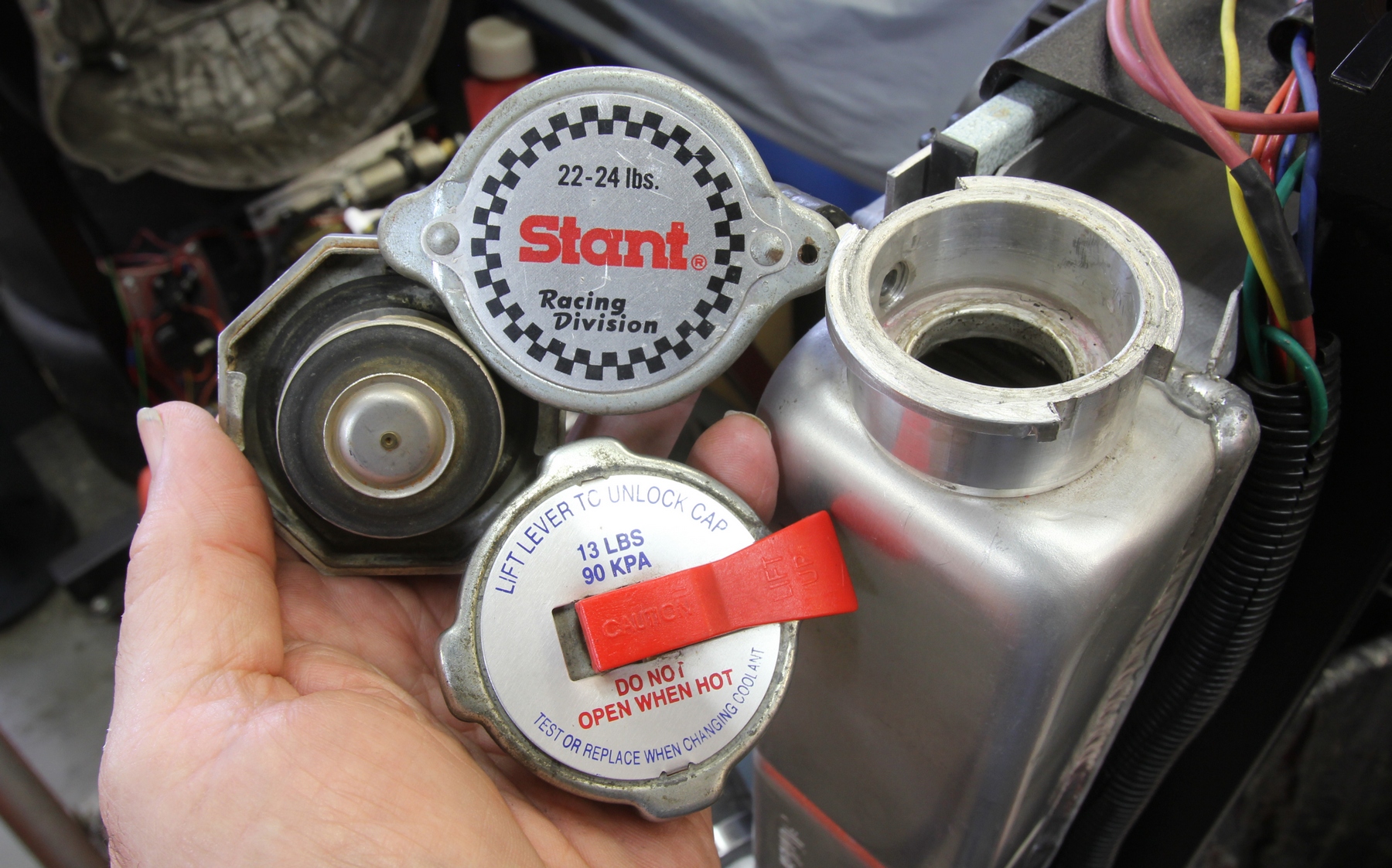
A quality pressure cap like one from Stant will maintain pressure in the system, increase the boiling point, and prevent boil-over. Even brand new caps will bleed pressure and leak because the filler neck dimension is incorrect or damaged. If this happens, stacking a second rubber seal to the original will often stop a leaking cap.
A better solution is to mix using “soft” water, or water filtered through reverse osmosis. This process removes the minerals but leaves the water electron-balanced. You may see recommendations by companies like Prestone or Zerex to use distilled water to mix with their coolants. This is acceptable because the fresh coolant already has a solid anti-corrosion package included in the coolant that will satisfy that electron imbalance. Mixing with soft water or filtered water would be just that much better.
Nearly all coolant recommendations push the 50/50-mix ratio with water. The reason for this goes well beyond freeze prevention. The additional reason for this mix ratio is to maintain the proper anti-corrosion concentrations of the additive package. With a ratio of only 20-percent coolant and 80-percent water, this radically reduces the anti-corrosion package, and puts those very thin aluminum radiator tubes at risk. We killed a couple of aluminum radiators in a ’93 Chevy pickup until we learned this lesson. What we eventually did was add a 50/50 mix of coolant, but an alternative was just to add a bottle of No-Rosion and that would have solved our problem. Lesson learned.
The story that connects all the dots on the coolant/antifreeze chemistry lesson is far more complex than this overview, as you’ll note we didn’t really get into the chemistry. We’ll let the chemical engineers write that one!


